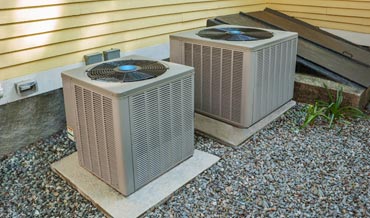HVAC 101: 8 Things You Need to Know About Your HVAC System
HVAC System HVAC 101
Owning a home can be a daunting task. There is so much to know and so much to care for. One of the most complex parts of your home is the heating, ventilation, and air conditioning (HVAC) system. You know the name describes its function and how to make them work, but perhaps very little more.
HVAC systems are intricate and need maintenance. You have heard that neglecting maintenance can be expensive. You really need to know more about this HVAC! This article will give you the basics about your system’s intricate parts and how they work together to make your home comfortable.
Identifying HVAC System Components
Two major HVAC components are connected tubing and wires.
- The component on the inside of the house is the furnace. You might find it in a basement, crawlspace, attic, or in a mechanical closet.
- The furnace includes a heating element: electricity or natural gas are usually the heat source. The element will have a boxy surround, a heat exchanger, to transfer the heat from the element to the air.
- The heated air is moved from the heat exchanger throughout the house with a blower motor. The air moves through a network of ducts to every room in the house.
- You will also find the evaporator coil in this unit. Expect it to be composed of copper tubes, perhaps in a V or A shape. The box surrounding the coil functions as cool air exchange and the same blower motor moves cold air through the network of ducts.
- The component on the outside of the house is the air conditioning compressor and condenser. While the furnace uses a heat source, the air conditioner uses compressed refrigerant gas to cool air. Here are the basics:
- When you compress any gas the gas gets hot, very hot. That is why the compressor is outside. Copper tubes connect the compressor with the evaporator coils inside.
- When you rapidly release the pressure applied to the gas, it gets cold, very cold. The pressure is released in those evaporator coils, cooling the air in the surround.
- While the gas cools the air, it also picks up heat from the inside of the house. The refrigerant gas cycles outside to be cooled and compressed again. A large fan in the center of the condenser unit helps to cool the refrigerant gas.
- Many newer HVAC systems are hybrid systems that employ a heat pump. A heat pump can reverse the air conditioner process. It takes the hot air from the inside and moves it to the outside, it can also move hot air from the outside and move it to the inside.
- Often a heat pump will require more air movement to effectively move heat.
- A heat pump can effectively move heat inside, even when it is cold. However, there are limits; when the temperature drops below approximately 350 F another heat source is needed. That is why a heat pump is usually a part of a hybrid system.
- If you have a hybrid heat pump HVAC system you will notice two heat settings on the thermostat; the second setting will read “aux” or “Em,” for emergency heat.
- Ducts were built into your home as it was built.
- Supply ducts move air from the furnace unit after it has been heated or cooled.
- Return ducts bring air back to the furnace unit to be conditioned again. The air cycles continuously to keep the air fresh.
- At least one air filter removes airborne particles from the circulating air. Look for this filter at the point the return air enters the furnace unit.
- The control for the HVAC system is a wall mount sensor called a thermostat.
- The thermostat measures the change in indoor temperature and activates the furnace or air conditioner as needed. Some thermostats have physical adjustments to toggle between heating and cooling functions.
- Most thermostats are programmable. This allows you to schedule changes in the temperature in your home for cost savings and personal comfort.
- Some thermostats include Smartphone apps to allow you to adjust and measure energy use.
- Newer blower motors have variable speeds. Variable speeds allow a furnace or a heat pump to function properly.
- All these components are controlled by precise electrical sensors and switches.
- This complex HVAC system is very energy efficient. The enemy of the entire system and each of its component parts is DIRT.
Have questions about your HVAC System?
For more information about R.M. Mullinix and HVAC Systems, schedule an appointment, or visit our HVAC System Maintenance information page.

